
X
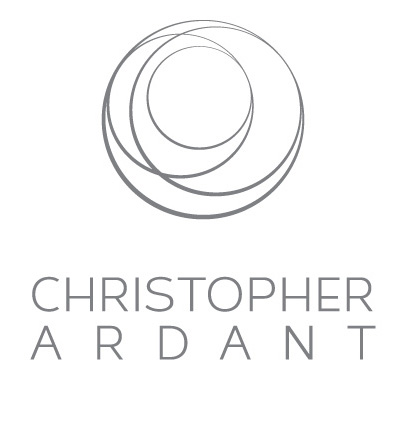
Blog
2020-05-04
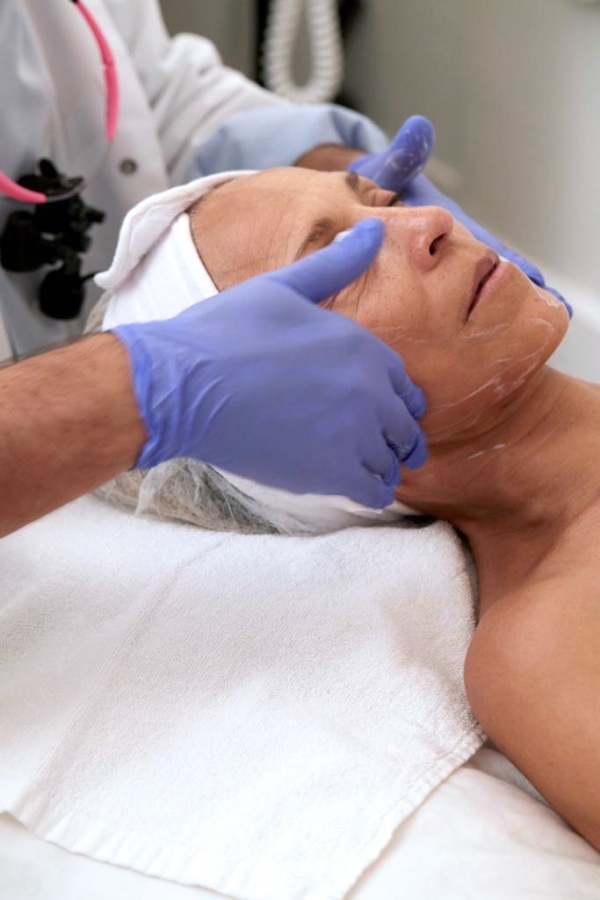
The A-Peel of Exfoliation

Exfoliation is an excellent way to keep the surface of your skin looking smooth and attractive.
The benefits of cosmetic exfoliation include:
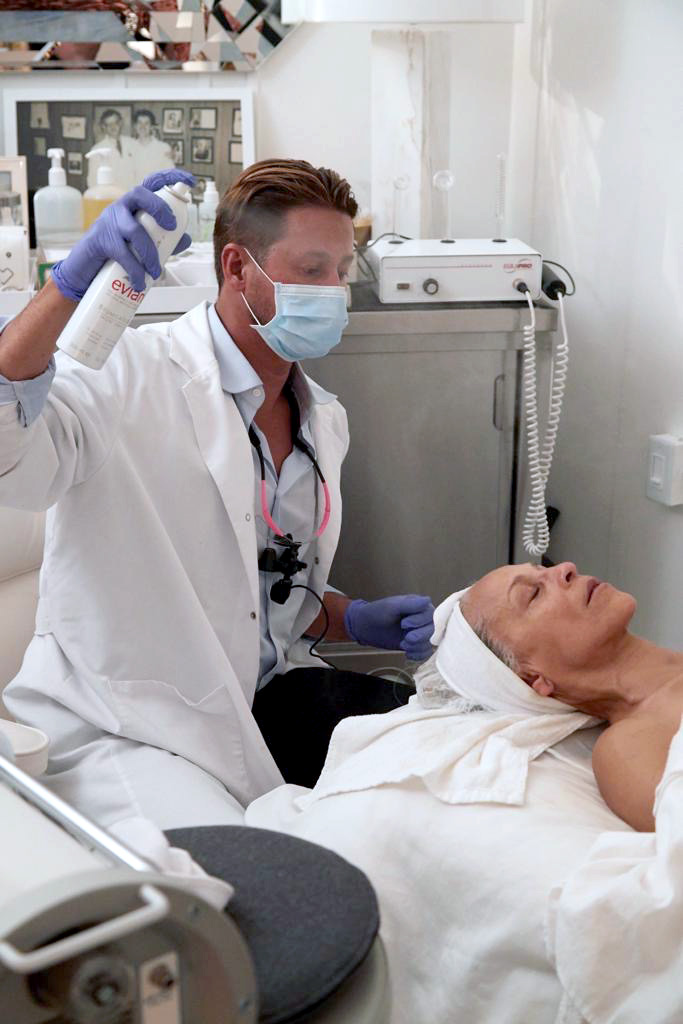
History
The practice of exfoliation has a long history: it can be traced back to Cleopatra bathing in sour camels’ milk. Fermentation converts natural sugars in milk into cellular energy (ATP) and a lactic acid solution. Antique cultures discovered that bathing in fermented milk softened their skin and probably brightened the appearance of darker areas of the body, including cuticles, knees and elbows.
The ancient Greeks and Romans can be considered the fathers of “dermaplaning.” During and after their hot and steam baths, bodies would be rubbed down with olive oil and then a dull, curved piece of metal or glass was dragged across the skin. This instrument, called a “Strigil” removed the dead cells on the surface of the skin.
In the era of the Renaissance and the age of “courts” in Europe, women smoothed fermented wine (with Tartaric acid) and vinegar (with Acetic acid) on their skin. This brightened their skin, making it look elegant and unsullied.
More than forty years ago, Hydroxyacetic Acid, also knows as glycolic acid, was being studied by dermatologists as a treatment for ichthyosis, a condition that causes dry scaly skin. After using this acid, the subjects and the doctors themselves noticed an unexpected improvement in the general appearance of the skin.
I has to be stressed that intros studies very high concentrations of acid were used — up to unbuffered 70%— enough to cause a superficial chemical burn and dramatic peeling of the skin in the following weeks.(3)(4) It looked as though this exfoliation was rejuvenating the skin and in some cases, increasing the thickness of the dermis. We may speculate that the plumping effect could be subclinical irritation induced edema (water retention).
The success of glycolic acid can be credited to several reasons:
At-home exfoliations fall into four categories:
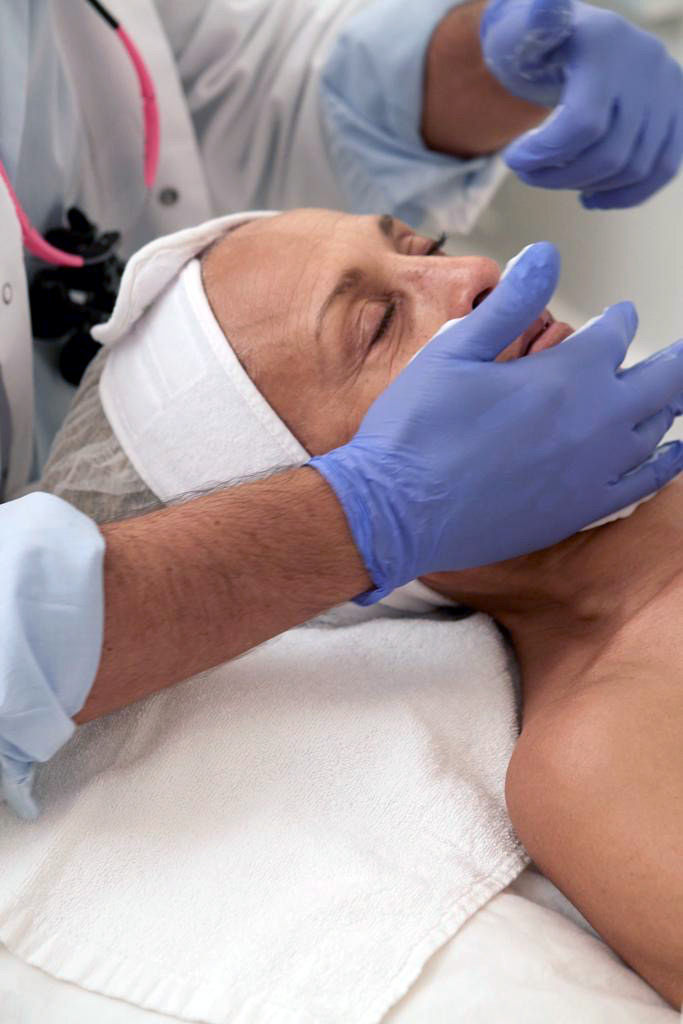
Let’s explore…
Chemical Exfoliation
Retinol is the king of “chemical” exfoliants. It stimulates new cells and rejuvenates the dermis. It’s a physiologically appropriate exfoliation. If you’re too sensitive for retinoids, use ascorbates. Vitamin C is milder, but still effective. It can work as effectively as a retinoid on gentle skin.
Every night, before applying retinoids, I recommend washing your hands with a foaming exfoliator. There are great foaming washes formulated for acne with salicylic acid that are perfect for your hands. This should become part of your daily routine.
Mechanical Exfoliation
Mechanical exfoliation works hand-in-hand with your nighttime exfoliation with retinoids. They are, in my experience treating thousand of subjects, extremely complementary. Retinoids will be used at night, and the most practical way to mechanically exfoliate is to use a scrub during the morning shower.
Choose scrubs with micro-spheres, microbeads or granules. You want the scrub to be cream based with no rough particles. Excellent cream bases are O/W (oil in water) emulsions with jojoba oil or shea butter combined with jojoba spheres. Scrubs that contain more abrasive particles like ground peach pits should be reserved for elbows and knees where the skin is rougher.
When scrubbing, you don’t want to create micro tears in the skin. Move the particles, don’t press the particles. You want the microbeads to lift the dead cells that are loose and ready to go. Think about a baby… You don’t want to separate the small creature from the mother too early. It’s the same with your skin cells — only the mature ones should leave home.
You do not want a scrub containing corundum powder. This powder, made from alumina, is used to polish and smooth gems, glass, metals, etc. — all very hard surfaces. You do not want something this harsh rubbing at your skin. I personally don’t like devices with rotatory nylon brushes (see “Clarisonic”). The bristles will scratch the skin, potentially creating micro tears.
I recommend that you wash your face and exfoliate with cloths like Eve Lom’s Cotton Muslin cloths ( https://www.evelom.com/shop-all/accessories/?lang=en_GB ). The texture of the muslin aids in the exfoliation treatment.
Enzyme Exfoliation
I personally use enzyme exfoliants especially on the fine lines around my lower eyes. It keeps the skin soft and pliable and prepares it to absorb emollients from eye serum and eye creams.
There are different enzymes. There is papain from papaya and bromelain from pineapple which is also anti-inflammatory. There is also something called trypsin, which is a very potent, and very expensive pancreatic enzyme used exclusively by doctors and licensed skincare professionals. The amazing thing about trypsin, in our own experiential data, is that tends to digest more aggressively areas of the face where cells are highly sun damaged (“solar lesions”).
Peptide Exfoliation
There is a novel and quite exiting exfoliant that is neither chemical, nor enzymatic — a peptide called HD3NA (Hexanoyl Dipeptide-3 Norleucine Acetate) (pronunciation not necessary to get the benefits.) HD3NA is an amino acid sequence that rebalances natural exfoliation by competing with desmosomes. Desmosomes are adhesion proteins that hold skin cells together — HD3NA breaks them down and helps the superficial layer of skin peel. It’s available in several high-tech serums and creams and is wonderful for reducing excessive buildup of dead skin cells.
Always be careful when exfoliating and pay attention to how your skin reacts. I see irritation from over exfoliation all of the time. The thinking goes, the more I exfoliate, the more I rejuvenate and that is not the case. Too much exfoliation can cause inflammation which speeds up aging.
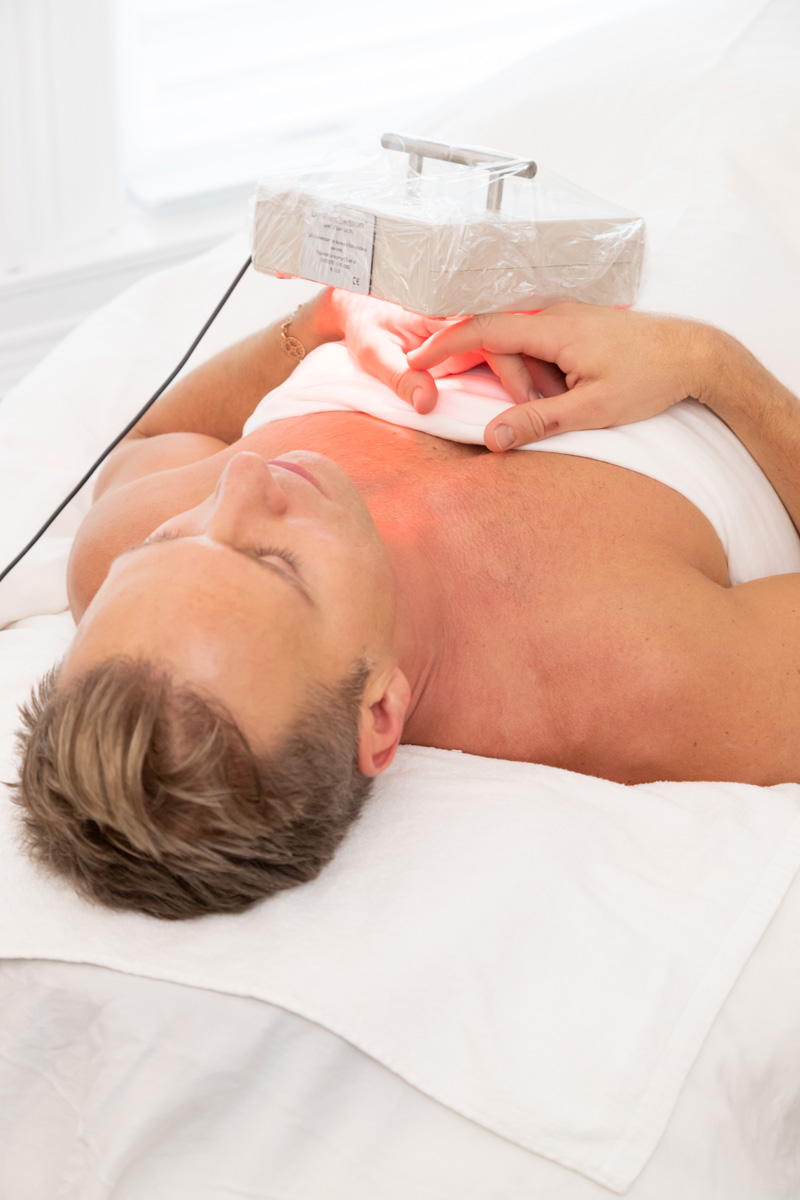
End Notes
(1) This is mainly the “job” of Retinoids, Ascorbates, and Peptides.
(2) We don’t use this technique in our centers as it is not effective and is less safe than most treatments.
(3) Control of keratinization with alpha-hydroxy acids and related compounds. I. Topical treatment of ichthyotic disorders. Arch Dermatol. 1974 Oct;110(4):586-90. Van Scott EJ, Yu RJ.
(4) “Hyperkeratinization, corneocyte cohesion, and alpha hydroxy acids.” Van Scott EJ, Yu RJ. J Am Acad Dermatol. 1984 Nov;11(5 Pt 1):867-79.
The benefits of cosmetic exfoliation include:
- More even color;
- Better texture;
- More efficient penetration and absorption of high-tech actives;
- Smoother skin to the touch; and
- Makeup will appear more flawless because there is a better base to work with.
Should this prevent us from regularly exfoliating our face and body at home? Definitely not. Do remember, though, that a face scrub will not make as a radical a change in your skin as the one that retinoids, ascorbates and professionals strength peels can provide.

History
The practice of exfoliation has a long history: it can be traced back to Cleopatra bathing in sour camels’ milk. Fermentation converts natural sugars in milk into cellular energy (ATP) and a lactic acid solution. Antique cultures discovered that bathing in fermented milk softened their skin and probably brightened the appearance of darker areas of the body, including cuticles, knees and elbows.
The ancient Greeks and Romans can be considered the fathers of “dermaplaning.” During and after their hot and steam baths, bodies would be rubbed down with olive oil and then a dull, curved piece of metal or glass was dragged across the skin. This instrument, called a “Strigil” removed the dead cells on the surface of the skin.
In the era of the Renaissance and the age of “courts” in Europe, women smoothed fermented wine (with Tartaric acid) and vinegar (with Acetic acid) on their skin. This brightened their skin, making it look elegant and unsullied.
More than forty years ago, Hydroxyacetic Acid, also knows as glycolic acid, was being studied by dermatologists as a treatment for ichthyosis, a condition that causes dry scaly skin. After using this acid, the subjects and the doctors themselves noticed an unexpected improvement in the general appearance of the skin.
I has to be stressed that intros studies very high concentrations of acid were used — up to unbuffered 70%— enough to cause a superficial chemical burn and dramatic peeling of the skin in the following weeks.(3)(4) It looked as though this exfoliation was rejuvenating the skin and in some cases, increasing the thickness of the dermis. We may speculate that the plumping effect could be subclinical irritation induced edema (water retention).
The success of glycolic acid can be credited to several reasons:
- It is a less expensive molecule;
- People feel its action — there’s a tingling sensation when it’s applied; and
- It’s considered “natural” because it comes from sugar cane, something that always appeals to consumers.
At-home exfoliations fall into four categories:
- Chemical;
- Mechanical;
- Enzymatic; and
- Peptide.

Let’s explore…
Chemical Exfoliation
Retinol is the king of “chemical” exfoliants. It stimulates new cells and rejuvenates the dermis. It’s a physiologically appropriate exfoliation. If you’re too sensitive for retinoids, use ascorbates. Vitamin C is milder, but still effective. It can work as effectively as a retinoid on gentle skin.
Every night, before applying retinoids, I recommend washing your hands with a foaming exfoliator. There are great foaming washes formulated for acne with salicylic acid that are perfect for your hands. This should become part of your daily routine.
Mechanical Exfoliation
Mechanical exfoliation works hand-in-hand with your nighttime exfoliation with retinoids. They are, in my experience treating thousand of subjects, extremely complementary. Retinoids will be used at night, and the most practical way to mechanically exfoliate is to use a scrub during the morning shower.
Choose scrubs with micro-spheres, microbeads or granules. You want the scrub to be cream based with no rough particles. Excellent cream bases are O/W (oil in water) emulsions with jojoba oil or shea butter combined with jojoba spheres. Scrubs that contain more abrasive particles like ground peach pits should be reserved for elbows and knees where the skin is rougher.
When scrubbing, you don’t want to create micro tears in the skin. Move the particles, don’t press the particles. You want the microbeads to lift the dead cells that are loose and ready to go. Think about a baby… You don’t want to separate the small creature from the mother too early. It’s the same with your skin cells — only the mature ones should leave home.
You do not want a scrub containing corundum powder. This powder, made from alumina, is used to polish and smooth gems, glass, metals, etc. — all very hard surfaces. You do not want something this harsh rubbing at your skin. I personally don’t like devices with rotatory nylon brushes (see “Clarisonic”). The bristles will scratch the skin, potentially creating micro tears.
I recommend that you wash your face and exfoliate with cloths like Eve Lom’s Cotton Muslin cloths ( https://www.evelom.com/shop-all/accessories/?lang=en_GB ). The texture of the muslin aids in the exfoliation treatment.
Enzyme Exfoliation
I personally use enzyme exfoliants especially on the fine lines around my lower eyes. It keeps the skin soft and pliable and prepares it to absorb emollients from eye serum and eye creams.
There are different enzymes. There is papain from papaya and bromelain from pineapple which is also anti-inflammatory. There is also something called trypsin, which is a very potent, and very expensive pancreatic enzyme used exclusively by doctors and licensed skincare professionals. The amazing thing about trypsin, in our own experiential data, is that tends to digest more aggressively areas of the face where cells are highly sun damaged (“solar lesions”).
Peptide Exfoliation
There is a novel and quite exiting exfoliant that is neither chemical, nor enzymatic — a peptide called HD3NA (Hexanoyl Dipeptide-3 Norleucine Acetate) (pronunciation not necessary to get the benefits.) HD3NA is an amino acid sequence that rebalances natural exfoliation by competing with desmosomes. Desmosomes are adhesion proteins that hold skin cells together — HD3NA breaks them down and helps the superficial layer of skin peel. It’s available in several high-tech serums and creams and is wonderful for reducing excessive buildup of dead skin cells.
Always be careful when exfoliating and pay attention to how your skin reacts. I see irritation from over exfoliation all of the time. The thinking goes, the more I exfoliate, the more I rejuvenate and that is not the case. Too much exfoliation can cause inflammation which speeds up aging.

End Notes
(1) This is mainly the “job” of Retinoids, Ascorbates, and Peptides.
(2) We don’t use this technique in our centers as it is not effective and is less safe than most treatments.
(3) Control of keratinization with alpha-hydroxy acids and related compounds. I. Topical treatment of ichthyotic disorders. Arch Dermatol. 1974 Oct;110(4):586-90. Van Scott EJ, Yu RJ.
(4) “Hyperkeratinization, corneocyte cohesion, and alpha hydroxy acids.” Van Scott EJ, Yu RJ. J Am Acad Dermatol. 1984 Nov;11(5 Pt 1):867-79.


